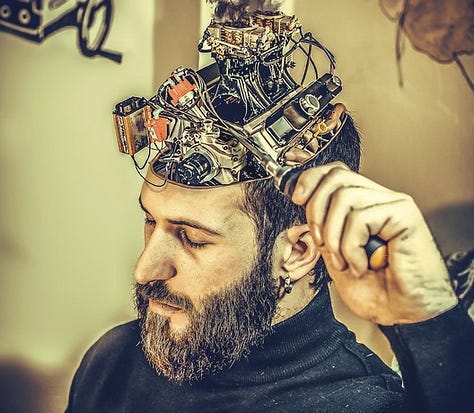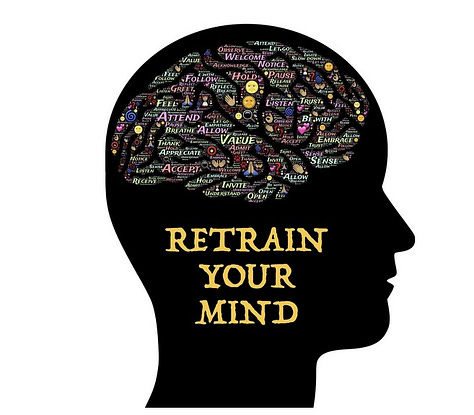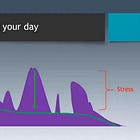Introduction
Here is the first part of my second interview with Tony Fitzgerald, Innovation Scientist. In this episode, Tony describes what he has been working on for the past year, how science is converging on a new understanding of the brain, how this relates to trauma, and how this supports certain therapy modalities.
Why is this important in my work with healing people with Parkinson’s and other chronic diseases?
This allows me to use the word heal for the first time in years. It has been nearly forbidden to say it in regard to chronic diseases. But with the last month’s explosive information stream of science backing our theory up, it is time to allow ourselves to use the same words. This interview is about science coming from the so-called “mental area” and explaining with science, why I can help people with chronic diseases.
Science in chronic diseases is looking for what is not working in the brain. Science in mental diseases allows themself to see how psychotherapy works.
It has always been known that people with these mental diagnosis labels can become better. In this interview, we hear how they are working hard to not only do the science, but also make it understandable and actionable for therapists.The only tiny little step that is missing is to integrate the fact that mental and physical health go hand in hand and cannot be separated. I understand that is a hard one to swallow as it will be followed by a revolution in the health system. Instead of this division in mental and physical doctors and hospitals, we will need a division in acute diseases and long-term conditions. Neurologists need re-education and a swarm of therapists will be needed instead.
As natural healing comes in so many forms it will be interesting to see in the crystal ball when the family doctor refers to a menu card of 100s of different modalities. Maybe not in my lifetime.



All my posts is leaning up against this post
Transcript
Lilian:
You just told me that you have been invisible for a long time.
Almost a year, so tell me why?
Tony:
So I've been invisible the last year. I've been working on the fundamental science for the application of trauma, mental illness, those sort of directions.
So we now have a new fundamental understanding of the brain. As I said before, it's coming out of, how we look at perceptual science, from vision, from auditory perception, and it's coming out of experimental psychology and psychiatry. There's information coming out of psychotherapy as well.
All points to this type of brain we have, that is so important to understand because it now explains why some people get trauma and others don't get trauma.
It explains the exact precise activities that cause trauma, and with that understanding, it also helps us understand there's a natural activity that updates the brain, updates memories, updates reactions to memories, updates our behavior, our body state, our somatics, and updates emotions. That activity, we can now access through therapy.
We understand the set of steps to basically access this brain that we have that we now understand from a fundamental point of view.
So my reason being so quiet for this last year is, is piecing that whole thing together, but doing it in a way now that we want to share with therapists, we want to share with people that work in trauma, work in helping other people to be better and recover, so that we can start to move towards this fundamental science of the brain and of symptoms, rather than think of symptoms, but think of root causes. Rather than the work of treating symptoms, but work of root causes, and rather think of this technique, that technique, that technique, think of there's a way the brain works, there's an activity that it has that updates.
So how does that technique access that activity? And how does it create the update? Once we start thinking in those terms, we're all working together, and helping and supporting each other to move forward. How do we use those techniques to use this brain activity to make the change that transforms trauma for people?
So what has come out of this last year is this idea of trauma zero.
An idea where the fundamental science suggests we should be able to permanently eliminate a person's trauma symptoms. That's what the fundamental science says. There are people doing things like yourself, who can do that sort of thing on many occasions.
My role now and what I feel is really important to do is to take that to the world in a way that we can provide that to therapists, this fundamental science understanding that comes from all these disciplines across vision and auditory senses and movement, and as I said, psychiatry, psychology is all coming up to the same understanding of the brain, it's all converging the same areas.
If we can take that to therapists, therapists can understand now how their techniques work, why it works.
When it doesn't work, why they're getting resistance, why people are stuck based on these brain activities. From there, refine their techniques, you know, use that information to improve the art.
So there's the science and the art and people like yourself have the art, and piece of the science. What we want to do is bring those together so that all of us as a collective community can support each other. So the art can now feed back and help the science understand those pieces as well.
So that's why I've been so quiet, but what's emerging now and what we're looking to take in to share with people who work with trauma and people who work in this space.
Lilian:
Does that mean that science now gets interested in what we're doing (traumahealing)?
Tony:
Oh, I think it's always been interested. Anytime you can make a difference.
But I think there's been a split. We're in a world now, where the one way to think about it is that a lot of the ways we think about the brain, we think about behavior, we think about medical illnesses, comes from ancient times, comes from thousands of years ago. Even the modern era, with coming to Freud, and even people, with Schema therapy, and all these understandings of the brain and attachment theory, all these different theories, all based at the core, they're still kind of caught up in some ways in this past way of thinking about the brain, past way of thinking about behavior that we've done from observation.
Wikipedia:
Schema therapy was developed by Jeffrey E. Young for use in treatment of personality disorders and chronic DSM Axis I disorders, such as when patients fail to respond or relapse after having been through other therapies (for example, traditional cognitive behavioral therapy). Schema therapy is an integrative psychotherapy combining theory and techniques from previously existing therapies, including cognitive behavioral therapy, psychoanalytic object relations theory, attachment theory, and Gestalt therapy.The triune brain is a model of the evolution of the vertebrate forebrain and behavior, proposed by the American physician and neuroscientist Paul D. MacLean in the 1960s. The triune brain consists of the reptilian complex (basal ganglia), the paleomammalian complex (limbic system), and the neomammalian complex (neocortex), viewed each as independently conscious, and as structures sequentially added to the forebrain in the course of evolution. According to the model, the basal ganglia are in charge of our primal instincts, the limbic system is in charge of our emotions and the neocortex is responsible for objective or rational thoughts.
This is the idea of the triune brain and the way it works great thoughts, emotions, and instincts.
But now the last 20 years we've had brain scanners that can look inside and look at the activity of the brain and now we have a completely different picture of what's happening because we can see the actual activity as it happens.
And scientists have mapped the brain right and they see like Google map of rows and see which direction information flows and they can see the way that our perception is updated by our expectations not just sensory information. So there's a whole lot of concepts now around this new brain, this new understanding of the brain, that totally transform how we think about techniques like yours, how we think about illness, how we think about symptoms, and allow us to move to a root cause.
I think there's a split, and there's a necessary time period for updating, where we go from looking at the brain as it does thoughts, it does emotions, it does instinct, to actually, what we know now from the fundamental science of the brain makes predictions and expectations about what you're going to see, about what you're going to feel about what you're going to do
And those when they're based on the past and high expectations that's when you have trauma based on that activity and we know the exact activity, that if you dial it up and dial it down you heal trauma, when you dial it down you heal trauma when that's high in a person that activity that expectation drives how they feel, it drives their response. That's when you have trauma and that's when you're fighting against this.
So I think you're right, there has been perhaps a dismissal of certain techniques or ideas because of this misunderstanding of what's actually going on.
Now what I see is this period of integration and my colleague Philip Lowe calls it Psyche 1, Psyche 2, and Psyche 3.
Psyche 1 is like the old time where it's just these experts, Freud, and these big charismatic personalities with their theories of how it all works.
Psych 2 is when you start to get the science coming. You get this science and how it works scientifically. But that's been colored by this ancient version of the brain and our understanding has just been layered onto this ancient version of the understanding of the brain.
So we've been stuck in that era, but Psyche 3 is now known. Now we've got an understanding of the activity of the brain. Because we've got the activity, we can measure inside the brain, this whole new way of understanding. We're not stuck in the ancient anymore. We're now open in the modern era.
We understand this brain is this expecting prediction machine, expecting what we see, expecting what we hear, and when that's high enough expectation, it drives your responses. It's not just the sensory coming in now. We understand how, from these brain maps and activity, the sciences have mapped the brain activity and seen how the expectations go into the perceptual areas in your visual cortex, in your motor cortex, in your interceptor, the insula, in those areas of the brain, they've seen how the expectations update your body state, update your behavior and your movement.
There might have been this era where it was hard to understand treatments like yours, but in this new era of the brain activity and this understanding of how it maps together, it becomes so much clearer.
We can unpack those concepts to make sense of techniques like yours. It all makes sense, and the outcomes that you get, Lilian, like this really permanent and really drastic improvement of symptoms, all make sense in this brain activity, this active brain understanding of thoughts, behaviors, and emotions, a new way of looking at it, body state.
Lilian:
That's amazing. So science is catching up. I have an analogy that what science is doing, it's like with our mobile phones, that you can use it without you knowing how it's made, how the CPU is connected in the different ways, it's like science is trying to find out how the brain works, but the rest of us can use it without this knowledge.
Tony:
And people like yourself have used it to help make the change. And now what we're seeing coming out of thousands of scientists working across the world all converging on this same understanding of the brain everywhere they look, this understanding of the brain makes so much sense of symptoms and our behaviors and our body state, and so it makes sense of why techniques like yours work, for example, Lilian.
There's now an understanding of the phone, in your analogy. That's what I've been doing, how do we simplify this to give it to therapists in a way they can understand it? Then they can go, “OK, well, that's why this person healed and this person didn't heal, and if I just do this, this person will also heal.”
That's why I've seen certain fields where they're dubious about the techniques, and for good reason, if you don't understand how they work, you might dismiss them or ones that say they can heal trauma very quickly, and these can often be dismissed by other fields where you work in a more slow methodical way. Both are equal.
But with this new understanding of the brain, we now begin to understand why using these techniques some can heal trauma in a few hours.
Caveat, depending on which type of trauma in which type of person and what type of background they have had, that becomes possible. It is not possible all in all cases with all techniques, but there is certain techniques that can do it.
It starts to become apparent why, when you understand the activity of the brain you can almost anticipate which techniques will work well and work to give permanent reduction of the trauma, and elimination of the trauma symptoms, and which will struggle and take longer. So you can start to anticipate which will work and which won’t be as effective.
…
see the whole interview here (or wait for more substacks :-))














